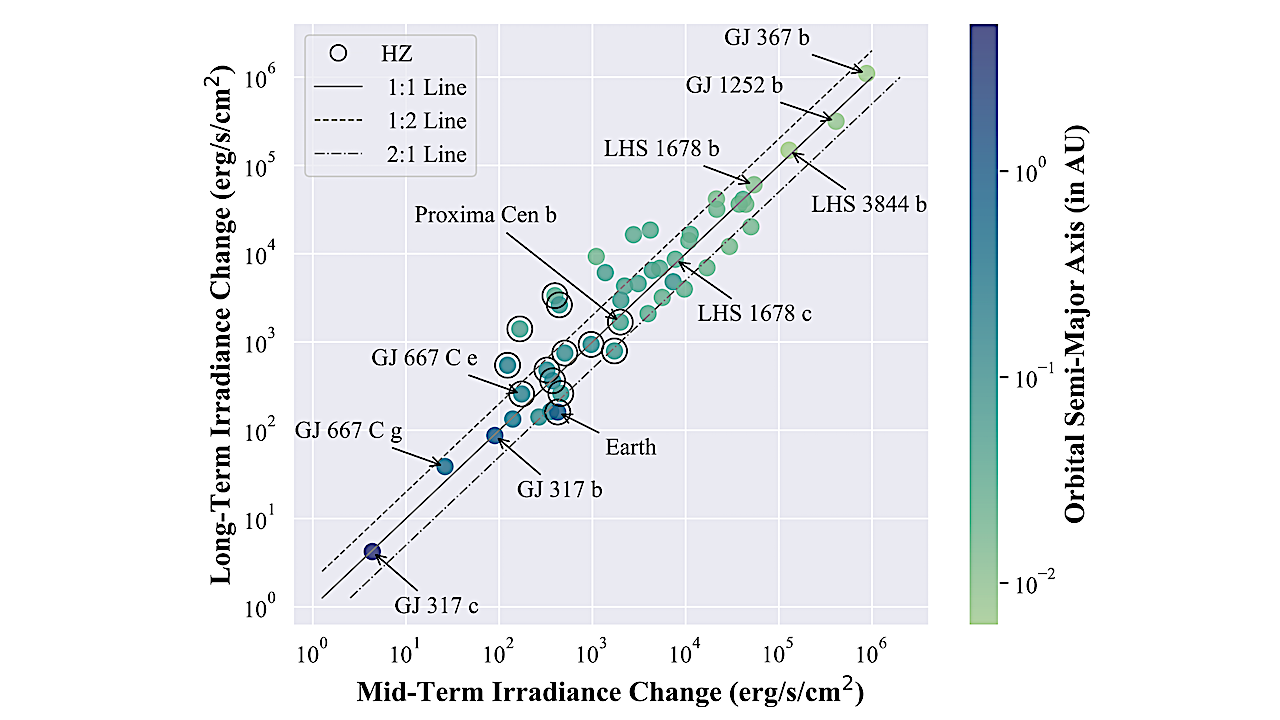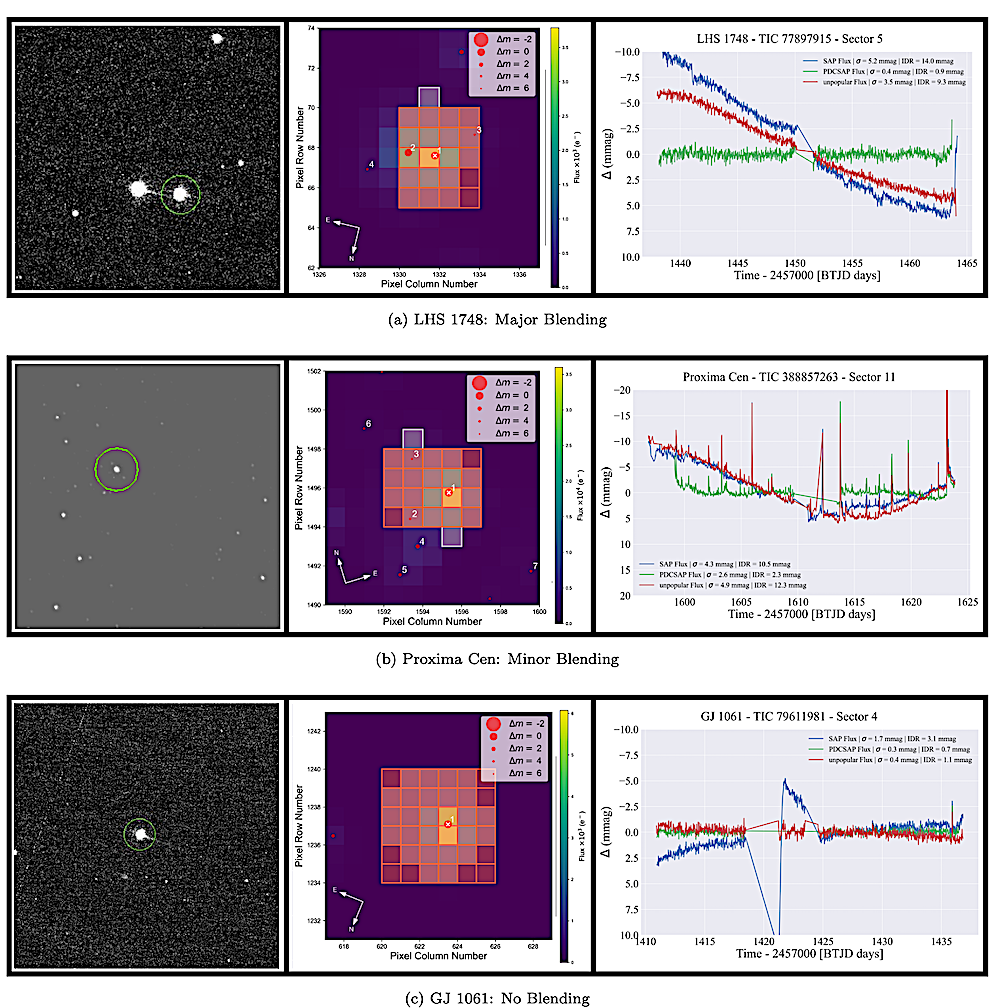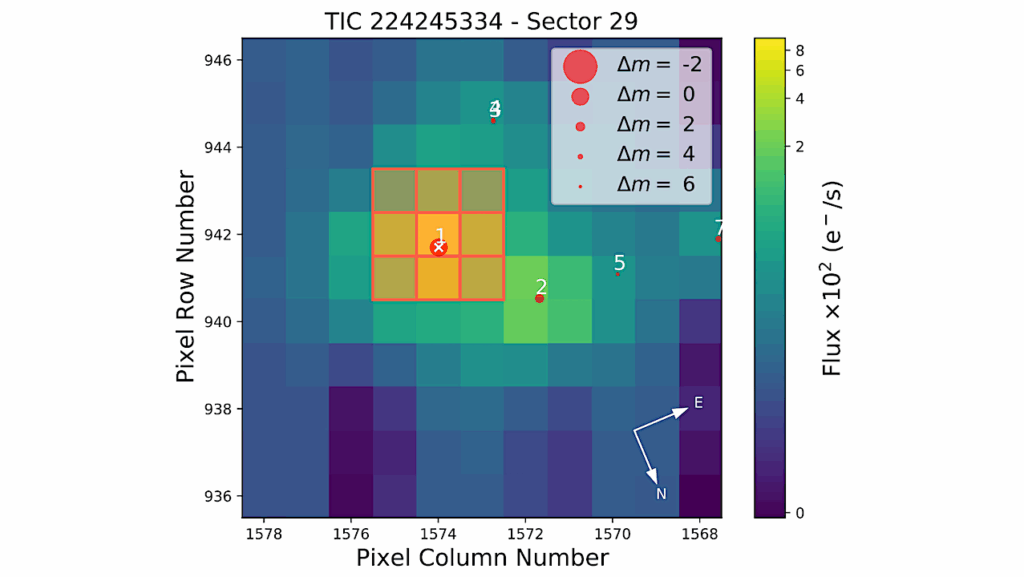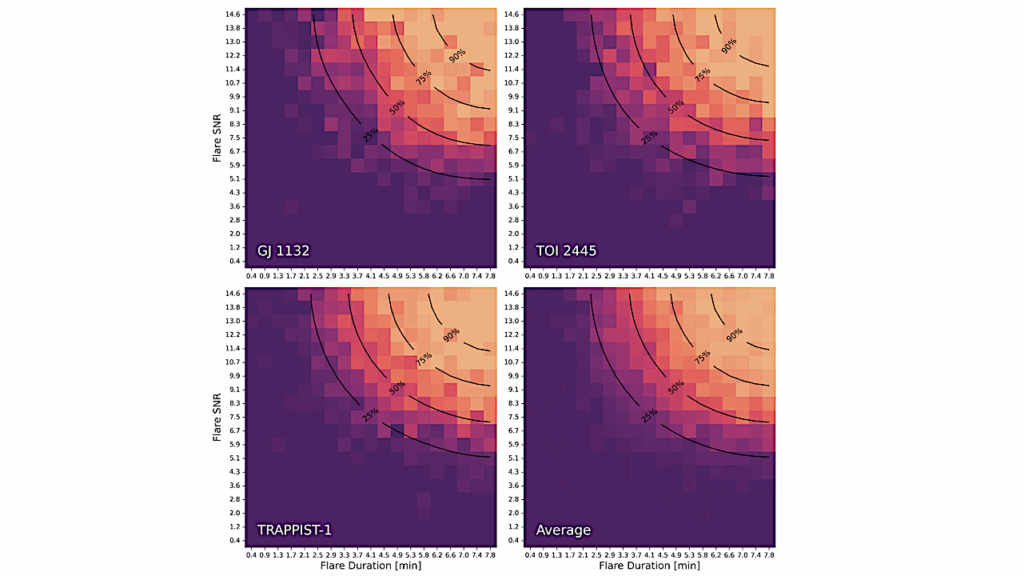The Solar Neighborhood LI: A Variability Survey of Nearby M Dwarfs with Planets from Months to Decades with TESS and the CTIO/SMARTS 0.9 m

We present the optical photometric variability of 32 planet-hosting M dwarfs within 25 parsecs over timescales of months to decades. The primary goal of this project, ATLAS — A Trail to Life Around Stars, is to follow the trail to life by revealing nearby M dwarfs with planets that are also “quiet”, which may make them more amiable to habitability.
There are 69 reported exoplanets orbiting the 32 stars discussed here, providing a rich sample of worlds for which environmental evaluations are needed. We examine the optical flux environments of these planets over month-long timescales for 23 stars observed by TESS, and find that 17 vary by less than 1% (∼11 mmag). All 32 stars are being observed at the CTIO/SMARTS 0.9 m, with a median duration of 19.1 years of optical photometric data in the VRI bands.
We find over these extended timescales that six stars show optical flux variations less than 2%, 25 vary from 2–6% (∼22-67 mmag), and only one, Proxima Centauri, varies by more than 6%. Overall, LHS 1678 exhibits the lowest optical variability levels measured over all timescales examined, thereby providing one of the most stable photometric environments among planets reported around M dwarfs within 25 parsecs.
More than 600 of the nearest M dwarfs are being observed at the 0.9 m in the RECONS program that began in 1999, and many more planet hosts will undoubtedly be revealed, providing more destinations to be added to the ATLAS sample in the future.

Panels illustrating three different types of blending in TESS, categorized as major (LHS 1748, top row), minor (Proxima Cen, middle row), and no (GJ 1061, bottom row) blending. left column: Images from the CTIO/SMARTS 0.9 m that are ∼3 ′ on each side (0. ′′401 pixel−1 plate scale) in which the ATLAS stars are circled in green. middle column: Target Pixel Files of the ATLAS stars (indicated with a white X and labeled 1 in each panel) from TESS. We overlay two apertures for the given target. The white aperture comes from the default SPOC pipeline. Shown in red is our custom rectangular aperture, drawn for the unpopular package to resemble the white SPOC aperture closely, as can be seen by the over plots of these two semi-transparent apertures. With tpfplotter, we identify contaminants in the red aperture. The filled red circles designate Gaia DR3 sources in the field where the radius of the circle is scaled to the ∆G (∆m scale shown in each panel) value of the source itself. right column: The TESS light curves of the ATLAS stars extracted in the same way as in Figure 4 — astro-ph.SR
Aman Kar, Todd J. Henry, Andrew C. Couperus, Eliot Halley Vrijmoet, Wei-Chun Jao
Comments: Accepted for publication in the Astronomical Journal. 27 pages, 12 figures, 2 tables
Subjects: Solar and Stellar Astrophysics (astro-ph.SR); Earth and Planetary Astrophysics (astro-ph.EP)
Cite as: arXiv:2402.14121 [astro-ph.SR] (or arXiv:2402.14121v1 [astro-ph.SR] for this version)
Submission history
From: Aman Kar
[v1] Wed, 21 Feb 2024 20:42:03 UTC (14,827 KB)
https://arxiv.org/abs/2402.14121
Astrobiology,








